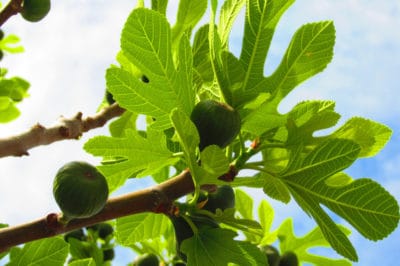Description
A small tree – usually about 20 feet – the Brown Turkey fig has the typical heart-shaped, deeply lobed leaves common to many figs. It typically bears two crops a year. The fruit is medium in size with a rich flavor, usually mahogany brown with a violet tinge. The pulp is deep pink to red in color. It is best eaten fresh and does not dry or can as well as other figs.
Other Names
Although Brown Turkey is the most common name for this variety, it also has a number of synonyms. These varieties may show slight variations in size or color:
- Eastern Brown Turkey
- English Brown Turkey
- Everbearing
- La Perpetuelle
- Lee’s Perpetual
- Texas Everbearing
- Aubique Noire
- Negro Largo
- San Piero.
Where to Grow
Brown Turkey figs are widely adapted. While most figs do best in USDA Zone 8 to 11, this fig will grow and produce fruit in Zone 6. This fig variety is heavily favored throughout the southern states and is also grown in California and Hawaii as well as Europe. It has received the Royal Horticultural Society Award of Garden Merit, indicating it also does well in England.
Growing Practices
Like all figs, the Brown Turkey fig prefers full sun for most of the day. Not fussy about soil, it must have good drainage to prevent problems with root rot and fungal problems. Regular water helps promote better fruit crops, but the tree should not be over-watered – once a week is usually all it needs. Fertilize with an 8-8-8 or 10-10-10 NPK fertilizer.
Pruning
In many cases, pruning is not really required for a Brown Turkey fig. However, birds are attracted to the fruit, which must ripen on the tree. Many gardeners prune the tree to make to easier to put on netting for bird protection. Suckers, broken or dead branches may also need to be pruned and if the tree develops a fungal disease, pruning is imperative.
Insects and Diseases
Fungal disease is the biggest problem you’re likely to run into with a Brown Turkey fig. Fungal diseases are nearly always related to over-watering – help prevent them with appropriate watering. Aphids, scale and spider mites may attack, but a healthy tree is not usually badly damaged by these pests. Practice good garden sanitation and use an organic insecticide only if absolutely necessary.
